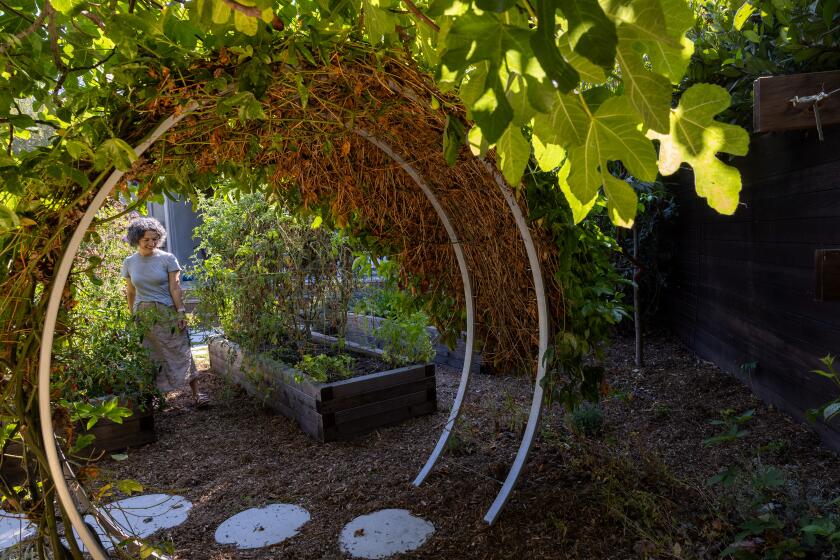UNTHIRSTY NATIVE PLANTS
These are among the most popular varieties of California native plants. Most are difficult to germinate from seed, and should be propagated from cuttings instead.
* California lilacs: There are more than 40 species of California lilac, as opposed to only two European species and one species native to the eastern United States. They generally bloom in March and April in shades of blue, purple and white and have a honey scent. One variety, the chaparral white thorn, grows into a spreading shrub that has deep roots, making it a good plant for dry, stony slopes. It can reach a height of five or six feet.
* California poppy: The state flower acts as a ground cover and grows in great quantity with little effort. There are several varieties of California poppy with flowers ranging from large, orange blossoms to small, yellow cups with orange-tinged edged edges. They are an annual flower, but often reseed.
* Matilija poppy: A sturdy perennial, which once established will probably be with you forever. The flower has a yellow stamen surrounded by white, crepe paper-like petals. The stems grow in clusters to a height of three to seven feet. These plants should be allowed to go dry in the late summer.
* The flannel bush, or California slippery elm: This is a large spreading plant that grows to 12 or more feet in height and produces yellow two-inch flowers in the late spring. It is tolerant of extreme heat and cold, but sensitive to excess moisture.
* Manzanitas: Manzanita bushes are a common sight on the hillsides of Southern California. They have red bark on crooked stems with green or gray-green leathery leaves, and stay green and healthy-looking all year. This plant also needs little or no watering in the summer months. The shrub reaches heights of three to 12 feet and has white or pink blossoms.
* The California holly or Christmas berry: One of the most well-known California native plants, the holly has large clusters of bright-red berries from late fall to early spring. It grows on hillsides to 10 feet high and 15 feet across, but can be pruned into a tree. In early summer, it has clusters of creamy white blossoms.
* Western redbud: This tree, native to the Sierra foothills, is spectacular in the early spring, when it produces masses of red-purple flowers. In the summer, it bears brown pendant pods.






